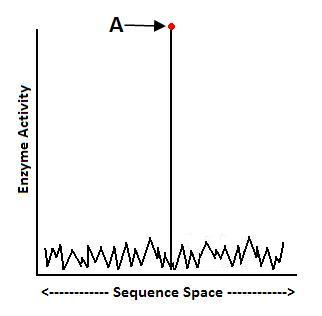 Education
Education
 Intelligent Design
Intelligent Design
Critics of Discovering Intelligent Design Ignore the Textbook’s Text
 A pro-Darwin blog, “The Dispersal of Darwin,” fails quite badly in one of the first attempts to attack our new ID curriculum, Discovering Intelligent Design. According to a post titled “Darwin quote-mining in latest book from the Discovery Institute,” the main offense we committed is this: We quoted Darwin correctly as having said “If it could be demonstrated that any complex organ existed, which could not possibly have been formed by numerous, successive, slight modifications, my theory would absolutely break down,” but we failed to note that Darwin then says “But I can find out no such case.” The anonymous critic then launches into the usual personal attacks, calling us “the Dishonesty Institute” etc.
A pro-Darwin blog, “The Dispersal of Darwin,” fails quite badly in one of the first attempts to attack our new ID curriculum, Discovering Intelligent Design. According to a post titled “Darwin quote-mining in latest book from the Discovery Institute,” the main offense we committed is this: We quoted Darwin correctly as having said “If it could be demonstrated that any complex organ existed, which could not possibly have been formed by numerous, successive, slight modifications, my theory would absolutely break down,” but we failed to note that Darwin then says “But I can find out no such case.” The anonymous critic then launches into the usual personal attacks, calling us “the Dishonesty Institute” etc.
Evidently, the critic hasn’t read Discovery Intelligent Design carefully. He ignores the fact that immediately after quoting that passage from Origin of Species, Discovering Intelligent Design explicitly notes that Darwin said he could find no such case. After pointing out that Jerry Coyne has said something very similar to Darwin, we state in the textbook:
As committed evolutionists, both Darwin and Coyne claimed they could not envision any organ that could not be built by random mutation and natural selection. (p. 95)
So there you have it. Even though we clearly and expressly acknowledge that Darwin thought there was no such case that failed his test of his theory, the critic refuses to acknowledge what we wrote, and we get accused of “quote-mining” and “dishonesty.”
In Discovering Intelligent Design, we of course go on to demolish Darwin’s (and Jerry Coyne’s) assertion that there are no known features that could not be built by natural selection. Darwin was absolutely correct about the way his theory could potentially be falsified. Natural selection easily preserves structures that confer some advantage on the organism. But some structures require much complexity to be present all-at-once in order for them to function and provide an advantage. Thus, they cannot be built by “numerous, successive, slight modifications,” as is required by Darwin’s mechanism of natural selection.
For starters, protein scientist Douglas Axe has performed mutational sensitivity tests on enzymes1 and found that functional protein sequences may be as rare as 1 in 1077. That extreme rarity makes it highly unlikely that blind, unguided Darwinian processes could find the amino acid sequences that yield functional proteins:

According to Axe’s research, most enzymes sit at Point A, high atop their fitness landscape, and many amino acids must be present all at once to get high enzyme functionality. There is no stepwise path to this finely tuned functional state, and thus enzymes cannot reach it via “numerous, successive, slight modifications.” They’re either at (or very near) the top of their adaptive peak, or nowhere close.
Similarly, biochemist Michael Behe and physicist David Snoke have performed computer simulations and theoretical calculations showing that the Darwinian evolution of a functional bond between two proteins would be highly unlikely to occur in populations of multicellular organisms. They found:
The fact that very large population sizes – 109 or greater — are required to build even a minimal MR feature requiring two nucleotide alterations within 108 generations by the processes described in our model, and that enormous population sizes are required for more complex features or shorter times, seems to indicate that the mechanism of gene duplication and point mutation alone would be ineffective, at least for multicellular diploid species, because few multicellular species reach the required population sizes.2
In other words, in multicellular species and on any reasonable timescale or population size, Darwinian evolution would be unlikely to produce features requiring more than just two simultaneous mutations. Even that is not “slight” enough for Darwin’s theory to work.
Interestingly, in 2008 Behe and Snoke’s would-be critics, writing in the journal Genetics, tried to refute Behe but found that to obtain only two simultaneous mutations via Darwinian evolution “for humans with a much smaller effective population size, this type of change would take > 100 million years.” They admitted this was “very unlikely to occur on a reasonable timescale.”3
Other research papers corroborate these results. In 2010, Axe published another peer-reviewed research paper which showed that molecular adaptations requiring more than six mutations to function would not arise in the history of the earth.4 Subsequent research published by Axe and Ann Gauger found that converting one protein into a closely related protein would require at least seven simultaneous mutations, more than would be available in the history of life.5 This again shows that “numerous, successive, slight modifications” cannot achieve simple protein transformations evolutionists claim happened easily in the history of life.
A similar experimental study published by biologist Gauger with Ralph Seelke found that when only two mutations were required to restore function to a gene, Darwinian evolution could not do the job.6 This again suggests that multiple mutations are required simultaneously to produce many structures.
The basic problem revealed by Gauger and Seelke’s empirical study is that it’s much easier for organisms to break or diminish function than it is to create it. Consistent with this, in 2010, Behe published an article in the prestigious journal Quarterly Review of Biology arguing that Darwinian evolution tends to destroy or diminish molecular functions rather than building them.7
The point of all of this to say is that much research is pointing in the direction of multiple simultaneous mutations being necessary to produce functional biochemical systems. This means that many structures cannot be built by “numerous, successive, slight modifications.”
An Unfair Result
There’s one other accusation of “quote-mining” by “The Dispersal of Darwin” — but it’s so weak and bizarre as to be hardly worth mentioning. He charges that when we quote Darwin’s statement, “A fair result can be obtained only by fully stating and balancing the facts and arguments on both sides of each question,” despite all appearances to the contrary, that’s not what Darwin really meant. Here’s the critic’s explanation:
Darwin is not stating that all sides are equal concerning debate over evolution, but rather that he cannot properly offer all the facts he has in support of evolution in On the Origin of Species, which was much shorter than the book he really wanted to write (he was, as you probably know, pushed to publish sooner when he received a letter from Alfred Russel Wallace outlining the same idea about natural selection). Context matters, and it surely does with this quote.
Yes, context does matter. But sometimes people mean exactly what they say — which is exactly why our quote from Darwin is entirely context-appropriate. The charges here are so outlandish that I almost can’t believe I’m devoting time to this, but OK, just to be clear, let’s look at the full paragraph from Darwin’s Origin of Species:
This Abstract, which I now publish, must necessarily be imperfect. I cannot here give references and authorities for my several statements; and I must trust to the reader reposing some confidence in my accuracy. No doubt errors will have crept in, though I hope I have always been cautious in trusting to good authorities alone. I can here give only the general conclusions at which I have arrived, with a few facts in illustration, but which, I hope, in most cases will suffice. No one can feel more sensible than I do of the necessity of hereafter publishing in detail all the facts, with references, on which my conclusions have been grounded; and I hope in a future work to do this. For I am well aware that scarcely a single point is discussed in this volume on which facts cannot be adduced, often apparently leading to conclusions directly opposite to those at which I have arrived. A fair result can be obtained only by fully stating and balancing the facts and arguments on both sides of each question; and this cannot possibly be here done.
Directly contradicting the claim of the critic, the context shows that Darwin said that there are many facts which could be raised that were not “in support of” his theory of evolution. Thus, we see that Darwin said: “I am well aware that scarcely a single point is discussed in this volume on which facts cannot be adduced, often apparently leading to conclusions directly opposite to those at which I have arrived” (emphasis added). Darwin then goes right on to say that we therefore must look at all the facts to come to the right conclusion because “A fair result can be obtained only by fully stating and balancing the facts and arguments on both sides of each question.”
I commend Darwin for saying what he said — for he acknowledged that there were valid objections to his theory, many of which he did not have space to explore in his book. He then asks the reader to look at all facts and arguments on “both sides” of the question, and come to the best conclusion. Our quote of Darwin here is entirely “in context” and appropriate to use.
In fact, it is this exact advice from Darwin that we encourage readers to follow when studying the evolution debate in Discovering Intelligent Design. And it’s interesting that “The Dispersal of Darwin” is misrepresenting Darwin’s meaning in an apparent attempt to discourage readers from “fully stating and balancing the facts and arguments on both sides” of the question. In fact, this makes for a nice object lesson, for his own failure to fully state the facts here is what led him to wrongly accuse us of misquoting Darwin.
I tell you, the things for which we get called “dishonest” never cease to amaze me.
For more information on the new Discovering ID curriculum, visit www.discoveringid.org.
References Cited:
[1.] Douglas D. Axe, “Estimating the Prevalence of Protein Sequences Adopting Functional Enzyme Folds,” Journal of Molecular Biology, Vol. 341: 1295-1315 (2004); Douglas D. Axe, “Extreme Functional Sensitivity to Conservative Amino Acid Changes on Enzyme Exteriors,” Journal of Molecular Biology, Vol. 301: 585-595 (2000).
[2.] Michael J. Behe & David W. Snoke, “Simulating Evolution by Gene Duplication of Protein Features That Require Multiple Amino Acid Residues,” Protein Science, Vol 13:2651-2664 (2004).
[3.] Rick Durrett and Deena Schmidt, “Waiting for Two Mutations: With Applications to Regulatory Sequence Evolution and the Limits of Darwinian Evolution,” Genetics, Vol. 180: 1501-1509 (November 2008).
[4.] Douglas D. Axe, “The Limits of Complex Adaptation: An Analysis Based on a Simple Model of Structured Bacterial Populations,” BIO-Complexity, Vol. 2010(4):1-10.
[5.] Ann K. Gauger & Douglas D. Axe, “The Evolutionary Accessibility of New Enzyme Functions: A Case Study from the Biotin Pathway,” BIO-Complexity, Vol. 2011(1) (2011).
[6.] Ann K Gauger, Stephanie Ebnet, Pamela F Fahey, Ralph Seelke, “Reductive Evolution Can Prevent Populations from Taking Simple Adaptive Paths to High Fitness,” BIO-Complexity, Vol. 2010 (2010).
[7.] Michael J. Behe, “Experimental Evolution, Loss-of-Function Mutations, and ‘The First Rule of Adaptive Evolution,'” The Quarterly Review of Biology, Vol. 85(4):1-27 (December 2010).
